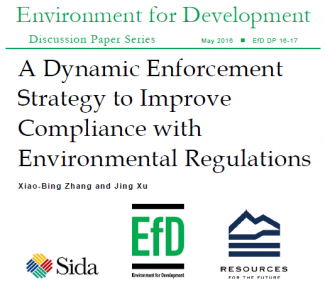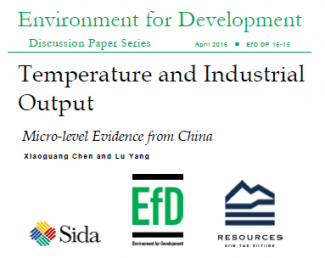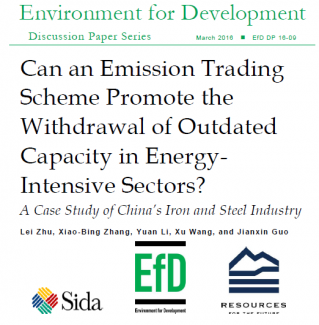FILTER
Displaying 201 - 210 of 329 publications
This paper develops a stochastic dynamic programming model to investigate a type of dynamic enforcement strategy where the penalties for violations of environmental regulations are based on not only…
| EfD Discussion Paper | ChinaEmploying hourly data records from 2013 and 2014 in Beijing, we investigate the causal effects of vehicle traffic on air pollution. An arguably exogenous variation in vehicle use that results from the…
| EfD Discussion Paper | ChinaWe pair a county-level panel of annual industrial output with a fine-scale daily weather dataset to estimate the responses of industrial output to temperature changes in China. We have three primary…
| EfD Discussion Paper | ChinaThis paper uses data from 2009 to 2014 to study the short- to medium-run effect of a driving restriction on transportation patterns in Beijing. The driving restriction specifies two numbers for each…
| EfD Discussion Paper | ChinaOutdated capacity and substantial potential for energy conservation are the two main features of energy-intensive sectors in developing countries. Such countries also seek to implement market-based…
| EfD Discussion Paper | ChinaThis paper shows how policies aimed at insuring health risks and those intended to improve the environment are (and should be) deeply intertwined. In the model economy inspired by recent Chinese…
| Peer Reviewed | ChinaHow may environmental regulation affect firm location choice? While this question has generated great research interest from high-standard, industrial economies, in this article we turn the spotlight…
| Peer Reviewed | ChinaThis paper evaluates whether the spirit of capitalism can explain the equity premium puzzle. The spirit of capitalism implies that investors acquire wealth not just for consumption, but also to…
| Peer Reviewed | ChinaWe use city-level data from the daily air pollution index and meteorological data on wind movement to see whether air pollution in China spills over from one city to another. We find that (i): a city…
| Research Brief | ChinaWe use county-level data on crop yields and cropland to estimate the potential biomass supply from crop residues in China. We find that China can potentially produce about 250 million dry metric tons…
| Research Brief | China



